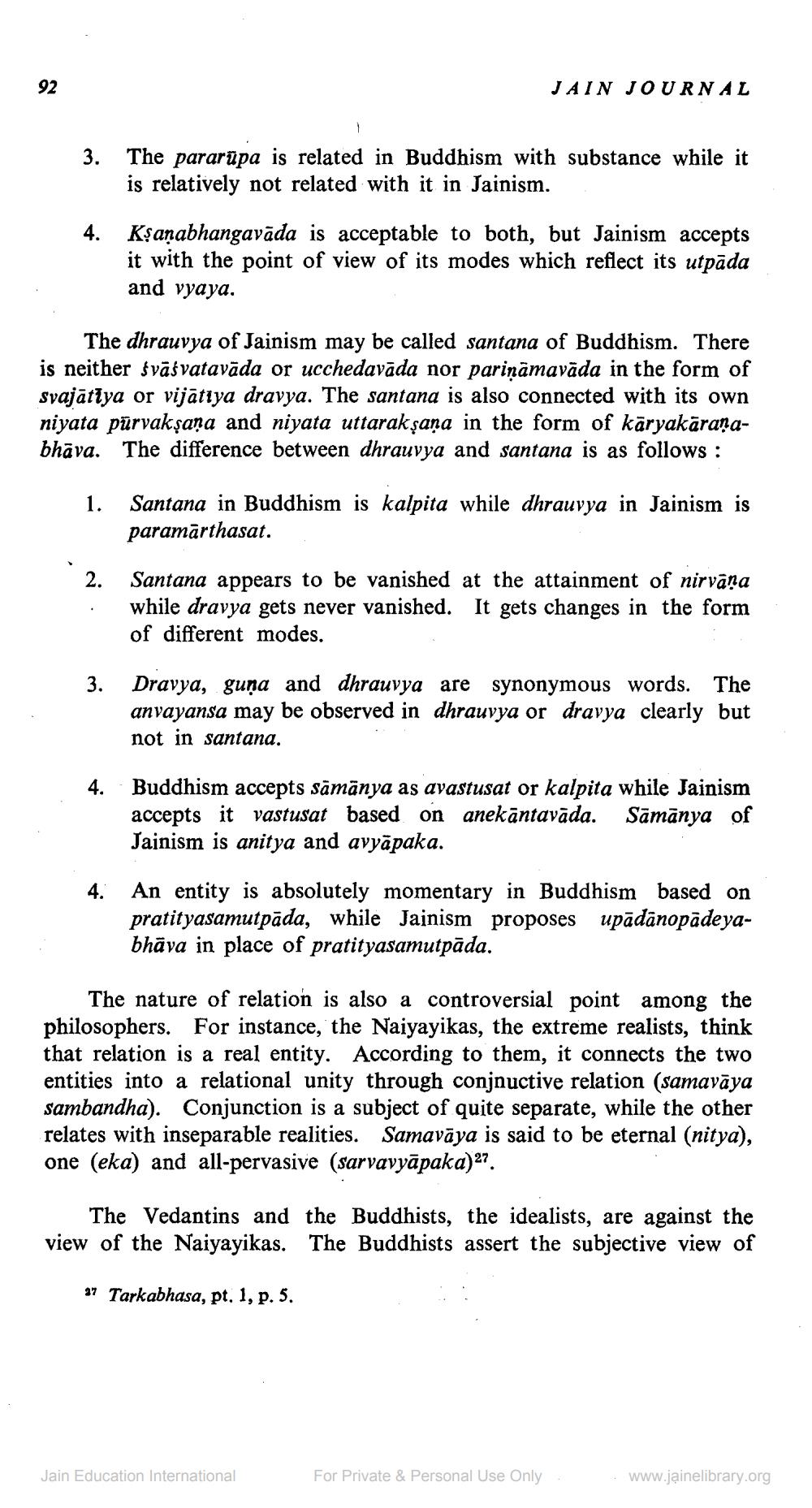________________
92
3.
4. Kṣaṇabhangavāda is acceptable to both, but Jainism accepts it with the point of view of its modes which reflect its utpāda and vyaya.
The dhrauvya of Jainism may be called santana of Buddhism. There is neither śvāśvatavāda or ucchedavāda nor pariṇāmavāda in the form of svajātīya or vijättya dravya. The santana is also connected with its own niyata purvakṣaṇa and niyata uttarakṣaṇa in the form of karyakāraṇabhāva. The difference between dhrauvya and santana is as follows:
2.
The pararupa is related in Buddhism with substance while it is relatively not related with it in Jainism.
1. Santana in Buddhism is kalpita while dhrauvya in Jainism is paramarthasat.
3.
4.
JAIN JOURNAL
Santana appears to be vanished at the attainment of nirvaṇa while dravya gets never vanished. It gets changes in the form of different modes.
Dravya, guna and dhrauvya are synonymous words. The anvayansa may be observed in dhrauvya or dravya clearly but not in santana.
Buddhism accepts sāmānya as avastusat or kalpita while Jainism accepts it vastusat based on anekantavāda. Sāmānya of Jainism is anitya and avyāpaka.
4. An entity is absolutely momentary in Buddhism based on pratityasamutpāda, while Jainism proposes upādānopādeyabhava in place of pratityasamutpāda.
The nature of relation is also a controversial point among the philosophers. For instance, the Naiyayikas, the extreme realists, think that relation is a real entity. According to them, it connects the two entities into a relational unity through conjnuctive relation (samavāya sambandha). Conjunction is a subject of quite separate, while the other relates with inseparable realities. Samavāya is said to be eternal (nitya), one (eka) and all-pervasive (sarvavyāpaka)".
The Vedantins and the Buddhists, the idealists, are against the view of the Naiyayikas. The Buddhists assert the subjective view of
27 Tarkabhasa, pt. 1, p. 5.
Jain Education International
For Private & Personal Use Only
www.jainelibrary.org




